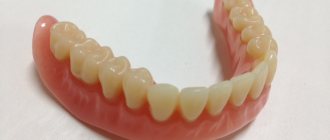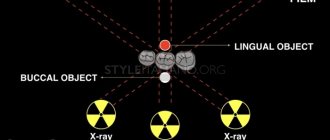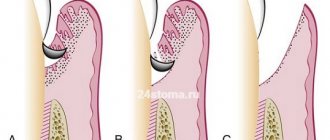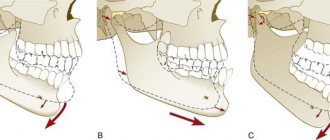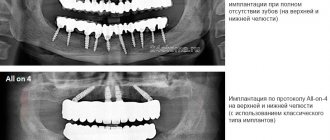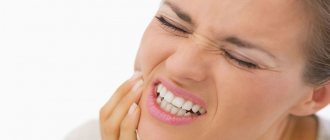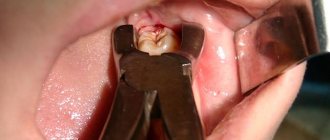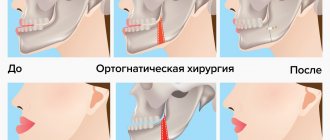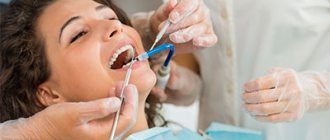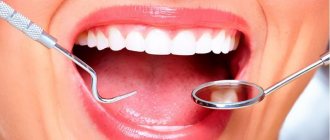When is molar tooth extraction indicated?
Only an experienced doctor can make an adequate decision about whether it is necessary or not to remove a molar tooth after a thorough examination. For detailed diagnostics, not only a visual examination is used, but also an analysis of the results of radiography or visiography. Indications for the removal of permanent teeth can be divided into absolute (in which the tooth requires mandatory removal) and relative (in these cases, the opinions of doctors may be divided).
Mandatory removal of a molar tooth is indicated in the following cases:
- there is a high probability that odontogenic osteomyelitis will develop;
- there is a risk of developing phlegmon or abscess.
- tooth root fracture.
Among the relative indications for the removal of molars are the following:
- if due to a dental disease, inflammation has developed in the area of a specific tooth (sinusitis);
- with longitudinal fractures of the tooth root;
- if the root and coronal part are so badly destroyed that therapeutic treatment is fraught with serious difficulties;
- if during the treatment of root canals their walls were damaged;
- tooth mobility is in the third or fourth degree;
- a fracture of the alveolar process, on the line of which the tooth is located, was diagnosed;
- in the oral cavity there are pathologies occurring around dystopic or impacted teeth;
- if orthopedic treatment is being carried out and certain molars cannot be used as support;
- if an orthopedic dentist or orthodontist has prescribed removal of molars and premolars.
As for the relative indications for molar tooth extraction, if you disagree with the opinion of one specialist, you should consult with another. This will help you choose the most gentle treatment and, possibly, save teeth that are at risk of removal.
Who to contact
The NovaDent dental network in Moscow and the Moscow region offers the services of experienced, reputable doctors. Removal of the roots of the teeth of the lower and upper jaw is carried out under sterile conditions, in compliance with all rules of procedure and hygiene. Sign up for a free consultation and we will select the optimal treatment plan for you at an affordable price.
Expert of the article you are reading: Kuzmenko Viktor Valerievich Orthopedist, surgeon, leading specialist of the NovaDent network
16 years
Clinical experience
Krasnogorsk
Moscow region, Krasnogorsk, Podmoskovny Boulevard, 5
+7
Free consultation with this specialist
Is it painful to remove molars?
Modern dentistry uses the latest drugs for local anesthesia when removing molars. Therefore, the patient should not be afraid of pain or serious discomfort during the process of tooth extraction. The thinnest needles are used to administer anesthetic injections into the gum area, so the injection is virtually painless.
Stages of molar removal
Before deciding to remove a molar tooth, the dentist conducts an examination using radiography or visiography. Based on the results of image analysis, the choice of surgical intervention technique is made. The procedure is then carried out in the following steps:
- An anesthetic drug is injected into the gum area, which leads to numbness in the patient’s mouth; Ultracain and Septanest are used in the Optimal Choice clinics.
- the ligaments that hold the tooth in the socket and the gums are peeled off using a special tool in order to reduce the risk of rupture of the soft tissues of the oral cavity;
- forceps are applied to the tooth or, in difficult cases, an elevator is used to loosen the damaged tooth, after which it is removed from the socket;
- the empty tooth socket is cleaned of tooth or bone fragments and checked for the presence of roots;
- if necessary, a hemostatic sponge is used or sutures are applied to stop bleeding.
After surgery, the doctor may prescribe analgesics to relieve pain after the anesthesia wears off.
Atraumatic removal of third molars
Damage to the inferior alveolar and lingual nerves are fairly common complications during extraction of mandibular third molars. However, improved diagnostic approaches and surgical treatments are helping to significantly reduce the incidence of such adverse outcomes. Below is a description of diagnostic and therapeutic techniques aimed at preventing surgical complications during extraction of lower third molars.
Tools and Methodology
When removing an impacted wisdom tooth in the lower jaw, it is extremely important to prevent damage to surrounding anatomical structures such as the inferior alveolar and lingual nerves, as well as periodontal tissues of the second molar. Therefore, the surgical instruments used are of utmost importance. In the presented case, an innovative mechanical periotome Luxator LX (Directa Dental) was used, which directly carried out the extraction procedure. The instrument allows you to cut the Sharpey fibers passing between the root cementum and the alveolar bone, and thereby free the tooth from the periodontal ligament.
Clinical case
A 22-year-old somatically healthy patient sought dental care for pain in the area of the 17th tooth, which spread to the entire lower jaw. The orthopantomogram visualized compression of the mandibular nerve, which was in contact with the roots of the 17th tooth (photo 1).
Photo 1. Orthopantomogram before treatment.
An intraoral examination revealed swelling and redness of the mucous membrane distal to the 18th tooth. There were no sensory disturbances in the lower jaw. The repeat image revealed that the position of the nerve was too close to the distal-lingual root of the tooth, which was also confirmed on CT sections (photos 2 - 3).
Photo 2. CT slices helped evaluate the course of the inferior alveolar nerve.
Photo 3. Localization of the nerve relative to the root based on CT data.
After performing anesthesia with a 2% vasoconstrictor, a single flap was formed, along which an intrasulcular incision was made around the 18th tooth. The releasing distal incision was made at an angle of 45º to the second molar, and at first this incision had a full tissue depth, and at the end it only partially penetrated the tissue. This incision avoids the risk of cutting the lingual nerve and serves as a connector for the flap. After exposing the jaw bone and installing a tongue guard, the Sharpey fibers were cut using a Luxator LX mechanical periotome around the entire circumference of the tooth, freeing it from the periodontal ligament (photos 4 - 5).
Photo 4. Extraction procedure using Luxator LX 360°.
Photo 5. Extraction procedure using Luxator LX 360°.
The tooth was extracted using an elevator without luxation of surrounding tissues or damage to the mandibular nerve. Through a controlled reciprocating motion, Luxator LX penetrates the periodontal ligament space (0.15 mm to 0.38 mm) and separates the fiber bundles from the tooth surface in the least traumatic way. This approach also minimizes the risk of damage to the nerve structures of the jaw. Photo 6 shows an x-ray that demonstrates how the working part of the instrument penetrates into the space of the tooth socket. Photo 7 shows the absence of root remains. The extraction procedure was carried out without segmentation of parts of the molar, so the latter was extracted in its entirety (photo 8).
Figure 6: Visualization of the Luxator LX inside the socket on a radiograph.
Photo 7. X-ray control: absence of root fragments in the hole.
Photo 8. Extracted tooth.
The alveolus was cleaned, irrigated with cold saline, and sutured with 4/0 silk thread. The sutures were removed 7 days after the iatrogenic intervention. The patient reported that the wound was healing without significant pain symptoms, which could be relieved with simple painkillers. The patient was advised to use an innovative gel toothpaste with a mixture of humectant and antibacterial agents (eg, cetylpyridinium chloride, triclosan and essential oils), which helps reduce the risk of plaque formation and reduce signs of bleeding. The level of abrasiveness of this paste was also slightly lower than that of conventional paste. The dental hygienist will further assist the patient in maintaining an optimal level of hygiene, as this is essential to ensure adequate healing. The procedure for professional oral hygiene was recommended to be carried out using glycine powder, which does not irritate the gums (Air Flow, EMS). Since the rough surface of teeth is more susceptible to the formation of bacterial plaque, polishing is an essential step in hygienic cleaning of the oral cavity. Silica-based polishing pastes with a low RDA value, such as ProphyPaste CCS Yellow RDA 40 (Directa Dental), can be used for this purpose.
conclusions
Extraction of the third molars of the mandible is directly associated with the risk of damage to the nervous structures of a temporary and permanent nature. Such complications can even provoke legal problems, so before starting treatment, the doctor must conduct a comprehensive diagnosis of the clinical situation, taking into account all aggravating factors (including the degree of wisdom tooth retention). The surgical approach used allows us to minimize tissue trauma and reduce the risk of damage to nearby nerves. Luxator LX is an effective tool that facilitates efficient molar extraction, significantly reducing the invasiveness of the surgical procedure and subsequent postoperative discomfort.
Authors: Loris Prosper Nicolas Zunica
Possible complications
If the procedure for removing a molar tooth was carried out by a doctor without proper experience, sanitary and hygienic requirements were violated, or the patient violated medical recommendations, then there is a possibility of complications:
- heavy bleeding that cannot be stopped for a long time;
- inflammatory process in the socket caused by infection;
- jaw movements become limited due to problems with the masticatory muscles;
- the alveolus is exposed;
- sharp edges of the hole are formed;
- limited osteomyelitis is diagnosed in the socket from the extracted tooth.
Symptoms of developing pathologies can be severe pain, unpleasant odor from the mouth, purulent discharge from the socket, the appearance of white plaque on the alveoli and the onset of bleeding. In these cases, you should immediately contact your dentist.
Pericoronitis
One of the common problems arising from incorrect tooth position is pericoronitis.
Pericoronitis is an inflammatory process of the tissues surrounding the wisdom tooth. The cause of pericoronitis is difficulty in the passage of the tooth through the gum. Even a small protrusion of a tooth above the gum can form a hole in it, which gradually expands, forming foci of infection. Plaque accumulates in this space between the gum and tooth and is difficult to clean.
Symptoms of pericoronitis include sensitivity and swelling of the gums surrounding the wisdom tooth. Sometimes there is severe pain, bad breath or a bad taste in the mouth.
If the dentist discovers that the cause of the development of pericoronaritis is an immersed wisdom tooth, then he suggests removing the wisdom tooth. The patient is prescribed a seven-day course of treatment. Antibiotics help reduce the infection, allowing the removal process and subsequent healing to go more smoothly. After a course of antibiotic treatment, the wisdom tooth is removed.
Preventive measures
In order to avoid serious complications after molar tooth extraction, you need to follow a number of recommendations:
- 20 minutes after the end of medical procedures, the gauze swab should be removed from the socket of the extracted tooth;
- In order for healing to occur faster, you should not drink or eat for the first 2-3 hours after surgery;
- for several days you should avoid eating solid foods, as well as spicy and hot foods and drinks;
- hot water procedures and physical activity are contraindicated until the hole is completely healed;
- You cannot wash the hole yourself or try to clean it with foreign objects that have not been disinfected;
- During the first 24 hours after surgery, you should not rinse your mouth;
- A cold compress on the right side of the cheek will help prevent swelling and reduce the likelihood of bleeding.
If the hole does not heal for a long time or it seems that there are remains of a tooth in it, then you should contact your dentist again and under no circumstances try to solve these problems yourself.
Experts' opinion
Question: Is it possible to rinse your mouth after tooth extraction? If yes, then with what?
Answer : During the first 24 hours after a molar tooth has been removed, doctors at the Optimal Choice clinics do not recommend rinsing your mouth at all. Active rinsing of the mouth, even if its goal is to cleanse food debris, can lead to a number of negative consequences. The main danger is the destruction and washing out of the formed blood clot in the socket, which interferes with rapid healing. This can also lead to the development of alveolitis. In the first few days, instead of rinsing, it is better to use baths with a decoction of medicinal plants (sage, chamomile, oak bark), a weak solution of salt or baking soda (or a mixture of them in equal proportions), furatsilin, miramistin, chlorhexidine, if prescribed by a doctor.
Question: After tooth extraction, the gums hurt and swelling is noticeable. What to do?
Answer: Slight tissue swelling and pain are very often consequences of the removal of molars. For relatively tolerable pain, it is recommended to take analgesics prescribed by your doctor. If the pain is severe, then you urgently need to visit the dentist again for a check. A cold compress applied to the cheek on the side of the extracted tooth for 15-20 minutes will help relieve swelling.
Diagnoses and special conditions of the body in which tooth extraction is not recommended
Surgical intervention to remove a tooth is still a significant stress for the body. There are a number of contraindications when dentists advise waiting until planned removal.
- Cardiovascular diseases (pre- and post-infarction conditions, exacerbation of hypertension, coronary artery disease with observed angina attacks, paroxysmal tachycardia, etc.). It is clear that many “heart” diagnoses are chronic and even lifelong, but if this is the case, then doctors wait for the exacerbation to pass and improvement to occur.
- Infectious and aggravated chronic diseases of the pancreas, liver or kidneys (this includes hepatitis, pancreatitis, pyelonephritis, etc.).
- Blood diseases (so-called hemorrhagic): Werlhof's disease, or hemophilia, or leukemia, etc.).
- Some diseases of the central nervous system (meningitis, encephalitis, as well as diagnoses associated with disorders of cerebral circulation).
- A number of psychiatric diseases during exacerbations, accompanied by constant or periodic inappropriate behavior of the patient. These may be stages of manic-depressive psychosis, schizophrenia, epilepsy.
- Any acute infectious diseases, regardless of the location of the infection.
- Diseases that affect the oral mucosa (stomatitis, herpes, gingivitis), as well as those diseases in which lesions of the oral cavity are a side symptom (tuberculosis, scarlet fever, leprosy, syphilis, fungal infections, etc.).
- The presence of malignant or benign tumors, as well as precancerous conditions. It is especially undesirable to remove teeth during chemotherapy or radiation therapy.
- Pregnancy, but only in the first trimester and ninth month.
If, however, it is nevertheless necessary to have a tooth removed plannedly or urgently for a patient with any chronic or incurable disease, then it may be necessary to consult with a doctor of the appropriate medical profile or even the presence of such a specialist during dental surgery.
At the VivaDent clinic, patients’ teeth are treated with the utmost care and try to use every opportunity to preserve them. However, if removal is truly necessary, the clinic’s specialists will perform this manipulation professionally and efficiently. To be convinced of this, you just need to trust our dentists.
